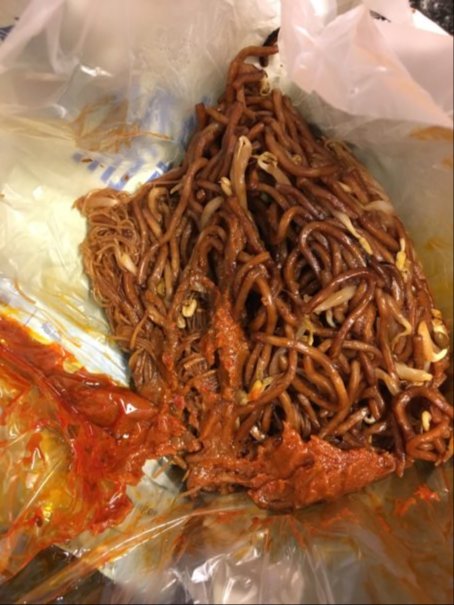
The Greasy American Dream, Wrapped in Newspaper

The Greasy American Dream, Wrapped in Newspaper
‘American’ noodles in Kuala Lumpur
Most mornings in Kuala Lumpur, it’s bearably cool and there is a mild level of activity around the neighborhood. You see shopkeepers setting up shop in the wet markets. You watch the silver-haired aunty next door perambulate around the neighborhood. You hear the myna bird singing her good mornings in the distance.
Growing up, weekday mornings meant the harried rush to school without breakfast, my father waiting tight-lipped in the Jeep for my sister and I. But weekend mornings meant traipsing downstairs at 9 a.m. to see what Phor Phor—my grandmother—had brought for breakfast from the wet market. I always hoped for nasi lemak. I especially loved the one that came with a side of mutton rendang, the most expensive platter that came in a polystyrene box, not the cheap kosong parcel that came with tight-fisted smatterings of ikan bilis, sliced cucumbers, a teaspoon of sambal and a quarter of a small boiled egg.
“Where is the nasi lemak, Phor?” I questioned one morning.
“Too late. Bo liao,” she replied shortly. She pointed to several newspaper parcels on the dining table. “There, American meehoon.”
I gingerly opened the rubber-banded parcel to reveal a glossy dark brown mess of plain fried noodles, tossed with beansprouts and cabbage, and served with a cleverly tucked tablespoon of sambal that sat to the side. It was the perfect storm of soy sauce and grease. I suppressed my quiet disappointment as I beheld the tangled mess in front of me. I really would have preferred nasi lemak. In any case, I got my personal chopsticks from the drawer and tucked in. I dipped my chopsticks into the sambal and roiled it in the noodles.
And then it hit me: no matter how many times I eat this, the first bite is always surprising. I never expect it to taste or feel halfway decent because it’s so awfully brown. The noodle is chewy but slick on the tongue, every bite accompanied with a secret beansprout and sliver of cabbage for added crunch.
“Why is it called American meehoon?”
“American meehoon, lah. Ciak lah.” American meehon. Eat. She clicked her tongue at me and walked off into the kitchen to ready lunch. Of course, this didn’t answer my question.
I sat and ate my breakfast in silence. I pondered all the reasons my breakfast could be called American meehoon. I doubted then, as I do now, that any American had come as far as Taman Cheras to christen a sodden parcel of noodles with a machine gun and a rallying cry for freedom. Maybe it’s American for its grease and empty calories, like the American French fry.
Maybe it’s American because the inventor had always wanted to go to the Land of the Free but had never been. Maybe it’s American so it would sound foreign and unattainable, like caffeine-free, sugar-free cherry Coke or red velvet Oreos: a dream wrapped in newspaper.
Now, I live far away from Kuala Lumpur. It’s funny that my Cheras-born American meehoon is now as far away and unattainable to me as America was back then.